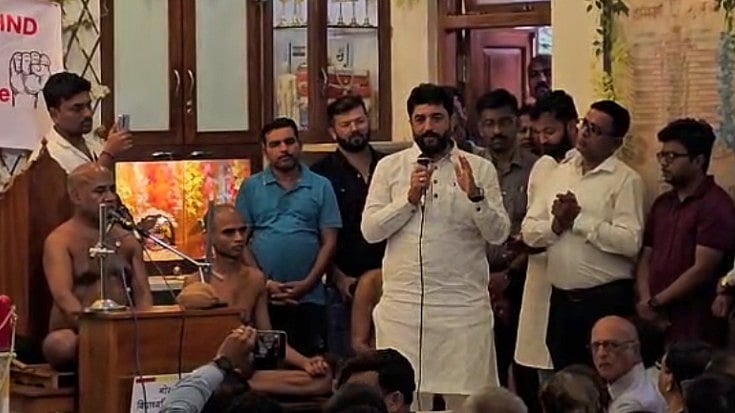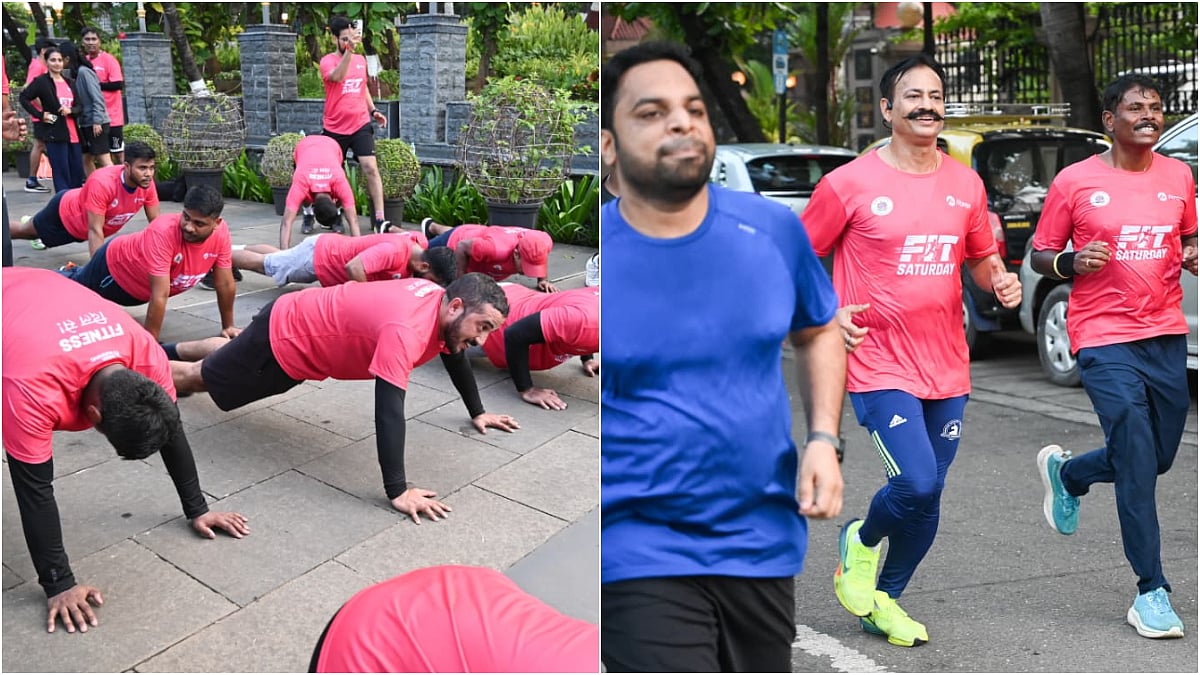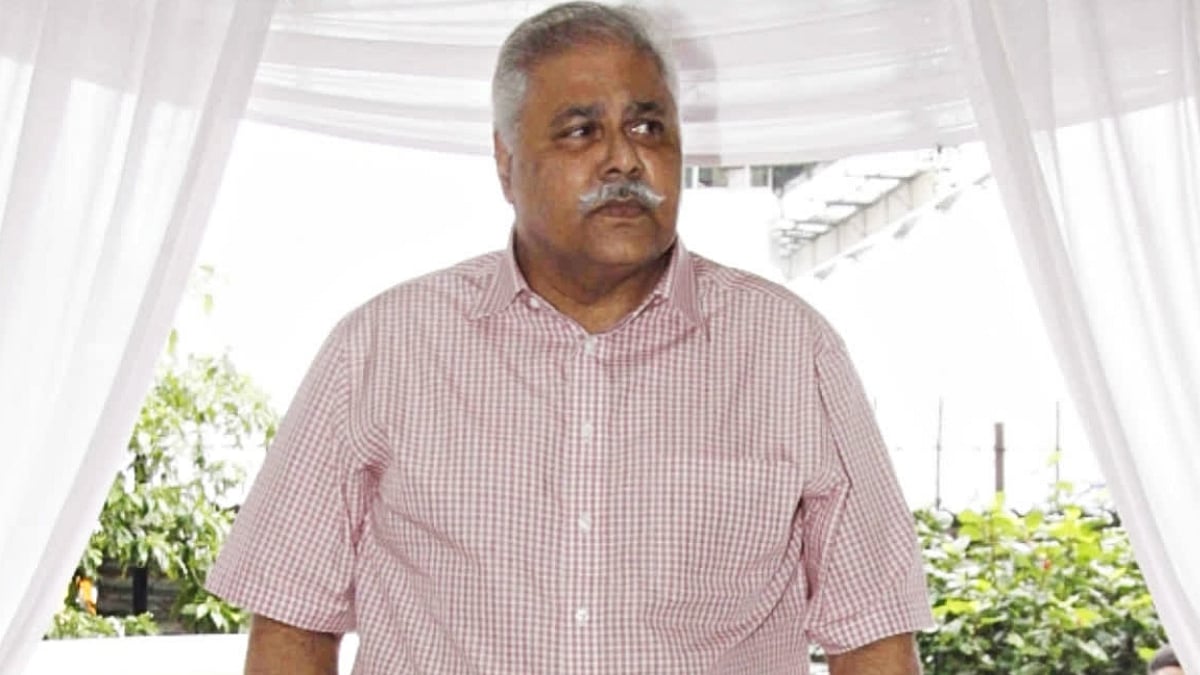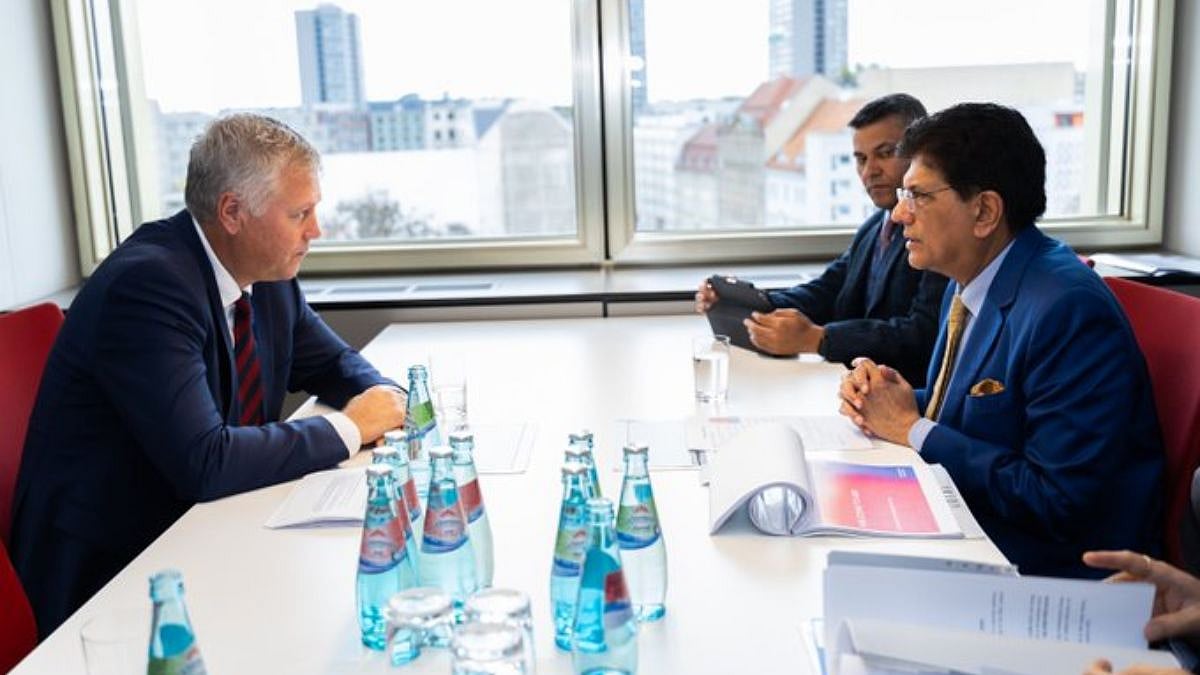Poverty is a growing concern for the world. Due to the COVID-19 pandemic, global extreme poverty has increased further. In order to understand the various poverty alleviation activities adopted by two populous countries — India and China, there was an online workshop on this subject which was attended by representatives of both countries.
This workshop was organised by The Free Press Journal and SIES College of Arts Science and Commerce from India, and Yunnan Center for International Studies & Yunnan University from China. It was supported by the Consulate-General of the People’s Republic of China in Mumbai and the Foreign Affairs office of People’s Government of Yunnan Province (YFAO).
The session was moderated by Cui Huanyong from China and RN Bhaskar from India. The opening remarks were given by Hao Kun, Deputy Director-General of YFAO and Sudheendra Kulkarni, a former officer on special duty with the PMO, India. The closing remarks were delivered by Tang Guocai, Consul General of China in Mumbai.
Speakers from China included: Chen Guobao, Deputy Director-General of Poverty alleviation and Development of the People’s Government of Yunnan Province; Wang Zhen, Ministry of Foreign Affairs of the People’s Republic of China; Wu Wanming, Counsel, Women’s Federation of Yunnan Province; Xiao Ying, Professor of School of Economics& Director of Rural Development Research Center, Yunnan University
Speakers from India included: Arun Raste, Executive Director, NDDB; Madhushree Sekher, Dean, School of Vocational Education & Chairperson, Office for International Affairs at TISS; Ajit Ranade, Chief Economist, Aditya Birla group of companies and senior fellow, Takshshila; and Rajgopal Devara, Principal Secretary, Finance, Government of Maharashtra.
Introduction
RN Bhaskar: The world is concerned about how to alleviate people from poverty. India is no exception. China has done well to eradicate extreme poverty. Thus, it becomes important for India and China to share experiences so that both can benefit. That is why it is heartening to see this conference organised, and excellent speakers from both countries present their views.
The first wave of COVID-19 was a nightmare for both. In COVID’s first wave, around 131 million were pushed to poverty around the world. In this, the largest sufferer was India that added 75 million people. India also saw its low and middle-income decline, adding great pressure on growth.
Opening Address
Hao Kun, Deputy Director-General of YFAO: Yunnan Province, located in the southern part of China, is home to many ethnic minorities. In this region, we are building a model era of asset creation and progress. In 2020, our provincial GDP reached 2.45 trillion yuan, ranking 18th in the country.
China made poverty alleviation a priority. China’s efforts in poverty reduction are unprecedented in scale and support. It has benefited many needy people.
We have completed the enormous task of eradicating absolute poverty. China achieved the UN SDG goal 2030 to eradicate poverty 10 years before schedule.
Yunnan was a province with a large number of poverty-stricken people. The Central Committee of the Communist Party of China (CCCPC) and local authorities focussed on poverty reduction by following the targeted approach. People of all ethnic groups made an effort to fight against poverty.
The efforts undertaken in Yunnan Province is a small example of our efforts. However, we are ready to share our experience with the world.
China’s poverty alleviation is a great undertaking and has participation from authorities, enterprises, educational institutions and the general public as well.
Since 1995, YFAO has been supporting Jinping county. We have invested 50 million yuan in the province and implemented more than 120 projects in the region. Thus, contributing to poverty reduction there.
Now, we are working in Jinping county for rural revitalisation to consolidate the poverty alleviation efforts and improve the lives of people in the region.
Our organisation has been involved in encouraging Bangladesh–China–India–Myanmar Forum (BCIM) for Regional Cooperation and Economic Corridor. We have carried out exchanges in economy, trade, education, tourism, medical and healthcare and others with India.
We believe that India and its people will win the fight against COVID-19. We are looking at exchange and cooperation between India and our province. Thus, strengthening the bonds between both countries.
Sudheendra Kulkarni: India made considerable progress in reducing poverty in the last few decades. However, we have not succeeded yet. In India, there are a large number of people who are in need of good food, habitat, health care, education etc. Thus, China’s success in poverty eradication is important to us.
There are seven lessons China has for India: national resolve; economic effort; targeting approach; deploying highly competent and dedicated cadre; protecting the ecology of rural areas and ecological regeneration; intelligent use of science and technology; and inspiring leadership of President Xi Jinping.
No historic transformation can ever be achieved without a strong political will at the highest level, supported by the people and the government; and innovative strategy backed by technologies.
There is no reason for both countries India and China to not cooperate. If both countries cooperate, we can make a huge contribution to improving the living standards of human beings on the planet.
Speakers from China
Chen Guobao: At one point, there were 8.04 million people living in poverty in Yunnan Province alone (Yunnan is in the South Eastern part of China). About 88 out of 129 counties in Yunnan Province, were impoverished.
By the end of 2020, 9.33 million rural people, 88 poor-stricken counties, and 8,502 poor villages have been lifted out of poverty. Even small-populated ethnic group has been elevated out of poverty. Poverty-stricken areas have developed more quickly. In addition, rural governance has significantly improved.
People have gained more sense of happiness and security. This enabled the ethnic groups to be more united and societies to become more harmonised.
The reason for this improvement is that we give importance to the socialism system and build up working and management mechanisms; the overall charge is taken up at the provincial level.
We have built a comprehensive leadership system which consists of party secretariats from provincial level to village level and leaders from party committees to function offices etc. Civil societies participated as well.
We have precise assistance in different villages for different households. The six points of assistance are target people precisely, project allocation precisely, funds used precisely, the working team sent precisely and outcome evaluated precisely.
We focus on two assurances and three guarantees: that rural people are free from worries over food and clothing and have access to compulsory education and basic medical services, and safe housing.
We encouraged new businesses to cooperate with 1.68 million registered poor households and we have 1.5 million poor families that have been relocated as well.
1.51 million poor people have a rural minimum guarantee, and 5.46 million poor people have a social guarantee.
Efforts were undertaken to improve infrastructure in poor villages. 8, 502 poverty-stricken villages today have access to roads. Facilities like the electricity network, clinics and other services are made available. 2.8 million households have access to safe drinking water and equipment for safe drinking water is guaranteed.
Participation of civil society to fight against poverty was helpful. About 293 provincial and Yunnan-based institutions have cooperated.
We tried to encourage poor people to get rid of poverty by their own efforts and encouraged more participation in alleviation projects.
We established an incentive-based mechanism: more effort, more gain and less effort, less gain; and no work, no gain.
Wang Zhen: Due to historical reasons, Jinping county did not undergo the modernisation process before 1992. People in the region were living in extreme poverty. About 30 per cent of the population in the region was below the poverty line around seven years ago.
In 1992, under the arrangement of the central government, the poverty alleviation work was started in Jinping county.
In the past 29 years, 250 million yuan has been received from governments, international organisations, social organisations and various groups. Around 879 projects were implemented in seven categories which include food supply, clean drinking water, education, medical care, agriculture, training and village infrastructure.
We also selected 22 diplomats to work in the county. We had the support of people from various walks of life.
Everyone in Jinping county has been lifted out of poverty.
Two ethnic groups gave up their primitive lifestyle and stepped into an era of modernisation.
We had programmes to encourage education and promote local businesses especially agricultural products in the national market.
Wu Wanming: I hope that there are more cooperations and interactions with women groups and federations in India to address issues of gender inequality, healthcare, education, etc.
The women federation in Yunnan province has been dedicated to poverty alleviation and the development of poverty-stricken women. We have adopted a series of policies and measures in economic development, employment and entrepreneurship, social development and others — remarkable achievements have been noted.
About 3.45 million poverty-stricken women have been lifted out of poverty. There has been development and improvement in the living condition of women. We trained 2,00,000 women in the region and the female employment-population increases by 50,000 every year.
Xiao Ying: There are eight university poverty alleviation alliance set up by the ministry of education in China namely education poverty alleviation alliances; poverty alleviation alliances of agriculture and forestry; tourism poverty alleviation alliances; health poverty alleviation alliances; consumption poverty alleviation alliances; intangible cultural heritage poverty alleviation alliances; resources and environment poverty alleviation alliances; and urban-rural planning poverty alleviation alliances.
With the transformation of traditional industries, e-commerce poverty alleviation changed the way agricultural produce is sold. Various efforts have been adopted to connect the ethnic groups to the world to export their agricultural produce.
Speakers from India
Arun Raste: About 65 per cent of the people in India live in villages. Around 85 per cent of the farmers are small farmers. They own 45 per cent of the land and own 75 per cent of the animals. There is more equitable distribution of animals in India than land.
Two sectors that worked wonders in rural India are dairy and microfinance. These models have done wonders for the Indian economy in the last 3-4 decades. The significance of these is the gender aspect as these models focus on women.
If you bring 45 per cent of the population into the productive workforce, then the GDP of the country rises.
Dairy is a very structured organisation. In this structure, people in urban regions get their milk supplies from rural India. Then, there is microfinance which is a top-down approach. Money is given as a loan to women in rural areas who form self-help groups or joint liability groups. These women are involved in activities that are income-generating. The largest borrowing is for agriculture and trading. The third-largest is for animal husbandry. Thus, going forward if India has to progress both dairy and microfinance should be the focus. If both come together India will be out of the shackles of poverty in the next 10-15 years.
Madhushree Sekher: The idea here is to help create tools to examine the local challenges in poverty alleviation and to map the same at the district and local level. It is important to have a multidimensional skill development strategy. This is now central to address issues such as poverty, illiteracy, employment, social issues etc. Skill development enables achieving economic development on all fronts.
This bottom-up approach requires a robust understanding of the implementation of the governance framework, starting at the local community level. It is important to understand the implementation challenges which are critical for governance to understand what is lost on the planning.
India’s focus has been to strengthen skills development through the education system. It is in this direction, we have initiated an internship embedded skill training programme. Here the focus is on job-specific skills rather than providing broad-based education which is delinked from skilling and skill understanding. This is being developed at school, universities and colleges level. This is creating opportunities to have an 'earn while you learn’ model to enable students to learn skills while engaging in an internship in a real workplace along with training in the classroom. This has been given more impetus in the New Education Policy 2020 where there is a large focus on this form of education. This will allow the student to earn a stipend during the education process.
In India, skill development straddles multidimensional inequality and straddles the informal economy and allows it to become mainstream.
Innovation becomes an important part of skill development education in the country.
Ajit Ranade: Two of the largest countries representing 40 per cent of humanity are discussing an important issue — poverty. If India and China address poverty, it will address 70-80 per cent of the world's issues. Poverty tends to be much more in developing countries. Addressing poverty in both countries will go a long way.
In India, poverty is much more confined to rural areas — it is not to deny that there are urban poor as well. The problem is much more acute in agriculture. So, the challenge to solve and address the problem of poverty is the same as the challenge to bring prosperity to agriculture.
The second proposition is that the solution to problems in agriculture lies outside agriculture. This is because India has reached the limit of productivity or acreage increase or livestock. This means if we have high growth in the industry and service sector it will automatically solve the problem of agriculture.
There was a survey that stated that 40 per cent of farmers were ready to leave farming if there were opportunities that gave them better-paid jobs and better living conditions. Employment creation outside agriculture will go a great length to reduce poverty.
Poverty cannot be addressed meaningfully without addressing the challenges of sustained economic growth.
Economic growth is the prerequisite to reduce poverty. The Chinese economy has shown that there can be economic growth that is industry intensive, labour intensive and based on exports. So, I think that template is manifested by other East Asian economies.
Rajgopal Devara: Pandemic has impacted the efforts to mitigate poverty. According to the World Bank, around 151 million people are back in poverty. India and China are not exceptions.
The poverty alleviation programme should be such that people who are alleviated from poverty should not be pushed back to poverty due to natural disasters like the present pandemic.
To eradicate poverty, India adopted fiscal and non-fiscal measures. There were few challenges in addressing poverty in India. However, we have done an enormous amount of work but there are miles to go.
There was a tremendous shift from agriculture to other sectors. Agriculture contribution has come down in the GDP, but we need to relook at agriculture and see how it can be improved. It can be done either by allowing people to continue in agriculture or leave agriculture.
Closing remark
Tang Guocai
The Coronavirus tsunami prevails one wave after another. The entire world is exploring ways to fight the epidemic and sustain a livelihood, with the poor suffering the most. Balancing the fights between poverty, pandemic, development and justice is very important. China and India together account for nearly one-third of the world's population. Ensuring the bottom line and guaranteeing stable development is of great significance to the future of mankind.
Rural revitalisation, noble responsibility
At the beginning of this Chinese year of Ox, President Xi Jinping's announcement on the thorough eradication of poverty nationwide attracted worldwide attention. China creates a wonder in human history. Over the past 40 years of reform and opening-up, China has raised 770 million people out of poverty, contributing more than 70 per cent of the global poverty reduction. China has realised the eradication of poverty set by "UN's 2030 Agenda for Sustainable Development" 10 years in advance, thus providing a practical and confident path for developing nations.
The Rural Revitalisation Strategy provides a grand blueprint for poverty alleviation in China. Both China and India are great agricultural civilizations, and most of the poor population resides in rural areas. In the long run, rural areas are true engines rather than burdens for the sustainable development of China and India. A green environment is the everlasting gold mine. China does not simply "transfuse blood" to the poor, but encourage them to work hard and "make blood" themselves. It is an excellent example of a People-centered Development Strategy.
Western Developed countries used to practice protectionism in their own agriculture industry. Under the pretext of the so-called democracy and human rights issues, they disrupt the agriculture industry of developing countries. For instance, the West has been fabricating the so-called "cotton human rights" issue in Xinjiang, China. In fact, India's cotton-spinning and agriculture also suffered likewise. They are actually trying to create racial divisions politically and stifle the foundation of national rejuvenation economically so that China and India will remain poor and weak forever. By sharing poverty reduction experience and working for common development, China and India are indeed making great contributions to the world's human rights cause.
Pandemic and so-called "decoupling"
A close neighbour is dearer than a distant relative. At the call of President Xi Jinping, the Chinese governments of various levels, especially civil organizations and business communities are making every effort to support India to fight the virus. As a matter of fact, China is providing the vast majority of oxygen concentrators and other medical supplies India needs. China is the first country to get out of the pandemic and resume development, offering India and the region huge opportunities. We are glad to find the second wave of COVID-19 here is melting down. As two of the world's largest vaccine producers, China and India have every reason to join hands and work for the final victory against the pandemic in our region and the world.
The Western "Hawkish strategy" and "Wolf pack tactics" will eventually shoot themselves in the foot. It is self-contradictory for some Indian media and think-tanks to ask China to keep the supply chain open on the one hand, and threaten decoupling with China on the other. Such opportunistic and protective ideas will only add up to the problem. The essence of the India-China relationship is how the two of the largest developing countries in the world live in harmony, develop and rejuvenate together. The consensus of the leaders of our two countries, which is 'not to pose a threat to each other, provide development opportunities for each other', shall be implemented earnestly together.
Rise of Asia, RCEP VS. Quad
Yunnan is one of the southern most and most beautiful provinces of China, enjoying preferable advantages in promoting cooperation with South Asia. Mumbai and the Southwestern coast of India have a long history of friendly exchanges and cooperation with China. The vibrant Asia-Pacific region is leading towards a new wave of multilateralism and free trade. The integration and development of East Asia, South Asia and Southeast Asia are unstoppable. "The Regional Comprehensive Partnership Agreement" (RCEP) is a free trade zone with the largest population, the largest GDP and the greatest development potential worldwide. RCEP, a sound grouping for development, has always opened its door to India, as a community of Asian destiny.
On the other hand, "the group of four" (Quad) advocates a so-called democratic alliance and targets certain specific country in an attempt for containment. Frankly speaking, although the haze of the epidemic has not dissipated, the "Cold War" mentality has been outdated long back. As a matter of fact, Asia stands in the east of the world, thus within Asia the so-called East-West divisions or controversies are ridiculous, purely western mentality. History has proven that following Western colonialism and militarism brought profound disasters and painful lessons to China, India and Asia. Looking back, India and China were glorious ancient civilizations and paradise for western colonizers to explore. Major developing countries like China and India can only achieve development and prosperity when they stand on their own feet. Only through common development by India and China, the rise of Asia and the return of civilization will truly be achieved.









